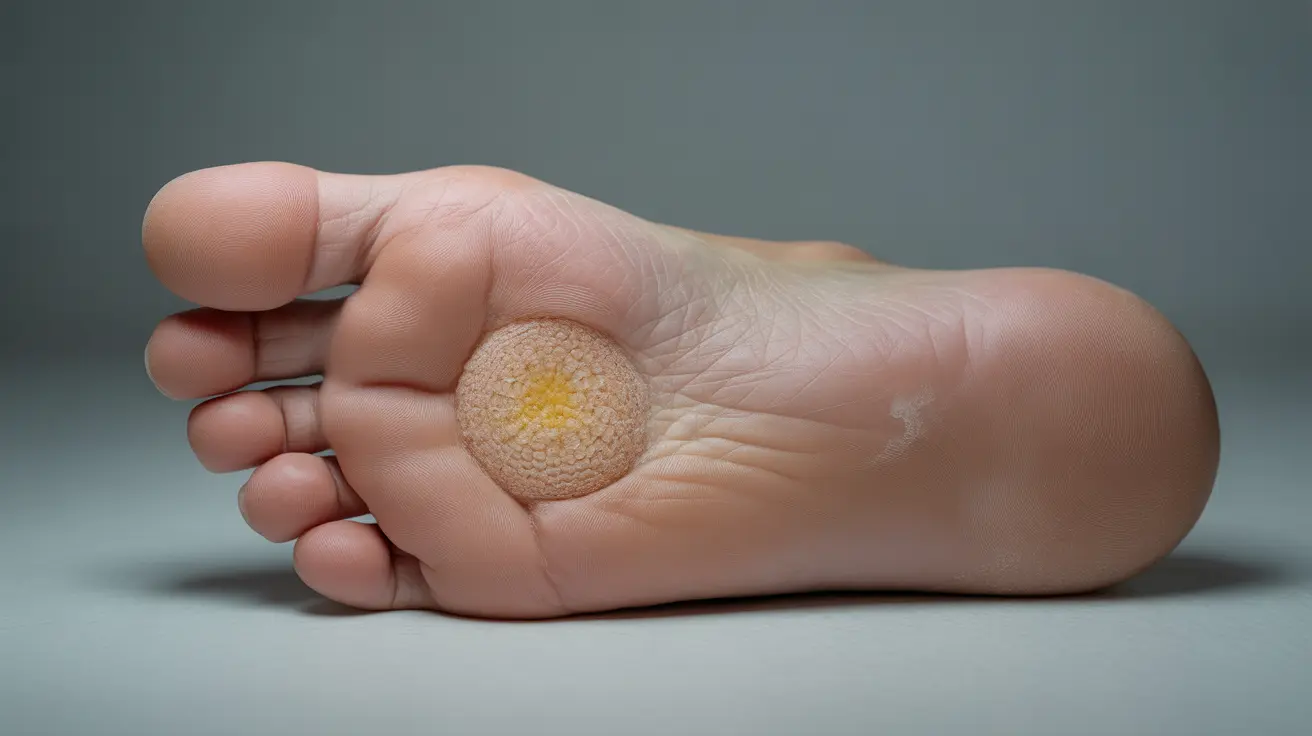Plantar corns are painful, thickened areas of skin that develop on the soles of your feet, particularly in areas that bear significant pressure during walking or standing. These hardened patches of skin can make everyday activities uncomfortable and affect your quality of life if left untreated. Understanding what causes plantar corns and how to manage them effectively is crucial for maintaining healthy, pain-free feet.
While plantar corns might seem like a minor inconvenience, they can indicate underlying foot problems or ill-fitting footwear that needs to be addressed. This comprehensive guide will help you identify, treat, and prevent plantar corns while maintaining optimal foot health.
Understanding Plantar Corns
Plantar corns are distinct from other foot conditions due to their specific characteristics and location. They typically appear as small, concentrated areas of hard skin with a dense, yellow-tinged center. Unlike calluses, which are more diffuse areas of thickened skin, plantar corns have a more defined core that can press into deeper layers of skin tissue.
Identifying Symptoms and Signs
The key symptoms of plantar corns include:
- A hard, thickened area of skin on the sole of the foot
- A well-defined, round or cone-shaped core
- Pain or tenderness when applying pressure
- Discomfort while walking or standing
- A waxy or translucent appearance
- Possible inflammation around the affected area
Common Causes and Risk Factors
Several factors can contribute to the development of plantar corns:
- Ill-fitting shoes that create pressure points
- Repeated friction from walking or running
- Foot deformities such as hammer toes or bone spurs
- Poor foot mechanics or gait abnormalities
- High-impact activities without proper foot protection
- Standing for long periods on hard surfaces
Prevention Strategies
Preventing plantar corns involves several key practices:
- Wearing properly fitted shoes with adequate toe room
- Using protective padding in pressure-prone areas
- Regular foot inspection and maintenance
- Maintaining a healthy weight to reduce foot pressure
- Choosing appropriate footwear for different activities
- Using orthotic inserts when recommended by a healthcare provider
Home Treatment Options
Several effective home treatments can help manage plantar corns:
- Soaking feet in warm water to soften the corn
- Gentle exfoliation with a pumice stone
- Using over-the-counter corn pads or cushions
- Applying moisturizer to prevent skin hardening
- Wearing cushioned socks and supportive shoes
- Using corn-removing solutions (following package directions carefully)
When to Seek Professional Help
Consider consulting a healthcare provider if:
- Home treatments aren't effective after several weeks
- The corn is causing severe pain
- You have diabetes or poor circulation
- There are signs of infection
- The corn returns repeatedly despite treatment
Frequently Asked Questions
What are the symptoms of a plantar corn and how can you identify one?
A plantar corn appears as a distinct, round area of thickened skin on the sole of the foot, often with a hard, yellow-tinged center. It typically causes pain when pressed and may feel like walking with a small stone under your foot. Unlike calluses, corns have a more concentrated, defined core.
How do you treat plantar corns at home without needing medical intervention?
Effective home treatments include regular foot soaking, gentle exfoliation with a pumice stone, using over-the-counter corn pads, and wearing properly fitted shoes. Keeping the area moisturized and protected from pressure can help prevent the corn from worsening.
What are the most common causes of plantar corns and how can they be prevented?
Plantar corns are primarily caused by repeated pressure and friction on specific areas of the foot. Prevention involves wearing well-fitted shoes, using protective padding, maintaining proper foot hygiene, and addressing any underlying gait abnormalities.
Can plantar corns be caused by underlying foot deformities or health conditions?
Yes, foot deformities such as hammer toes, bone spurs, or unusual foot mechanics can lead to plantar corn development. Certain health conditions that affect circulation or cause nerve damage may also increase the risk of developing corns.
What over-the-counter treatments are effective for removing plantar corns quickly?
Effective over-the-counter treatments include salicylic acid-based corn removers, protective corn pads, and cushioned insoles. However, these should be used carefully according to package instructions, and individuals with diabetes or poor circulation should consult a healthcare provider before using medicated products.




